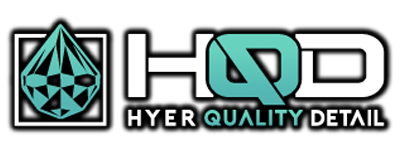What Are The Advantages & Disadvantages of PPF?
Paint protection film (PPF), often referred to as clear bra, is a thermoplastic urethane film applied to the painted surfaces of a car to protect the paint from stone chips, bug splatters, and minor abrasions. Renowned for offering superior car paint protection, PPF offers the best form of car paint protection for exotic & luxury vehicle, daily drivers and more. We’ll explore the advantages and disadvantages of PPF, flipping the script to showcase how apparent drawbacks can actually be benefits in disguise.
Advantages of Paint Protection Film:
Enhanced Paint Longevity
The primary advantage of PPF is its ability to preserve a vehicle’s paint job. Acting as a shield, it protects against the environmental elements and road debris that can lead to scratches and chips, ensuring the car retains its aesthetic appeal and resale value over time.
Self-Healing Properties
High-quality paint protection film has self-healing properties. Minor scratches and swirl marks disappear with the application of heat helping to maintain smooth and sleep vehicle exterior.
Ease of Maintenance:
With PPF, car washing becomes less of a chore. The film’s smooth surface allows for easy cleaning, meaning less effort is required to keep the car looking spotless. Additionally, the need for waxing is reduced, as the film provides a glossy finish and protection against the elements.
Customization and Aesthetic Enhancement
Matte PPF options offer an opportunity for personalization. Owners can opt for a unique, stylish matte finish while still benefiting from the protective qualities of traditional clear PPF.
Cost-Effectiveness
Considering the long-term benefits, PPF is a cost-effective solution for car paint protection. It mitigates the need for frequent touch-ups and repainting, saving money over the vehicle’s lifespan.
Disadvantages (or Hidden Advantages) of Paint Protection Film
Initial Cost
The upfront cost of PPF might seem like a disadvantage, but it’s an investment in the car’s future. This cost pays dividends by reducing maintenance expenses and preserving the vehicle’s value, which can more than offset the initial outlay when it comes time to sell or trade in the car.
Installation Process
PPF installation is meticulous and time-consuming, which might be seen as a disadvantage. However, this attention to detail ensures a flawless finish without bubbles or misalignments, which can detract from the vehicle’s appearance and diminish the film’s protective qualities. It is laways important that you work with an experienced and detailed paint protection professional to ensure the best results.
Limited Lifespan
While PPF doesn’t last forever, its lifespan of around 5-10 years is a testament to its durability. Moreover, once it’s time for replacement, the removal process is straightforward and doesn’t damage the paint, allowing for a fresh application that keeps the car looking new.
Complexity with Matte Finishes
Matte PPF can be trickier to install and maintain than its glossy counterpart. But this complexity ensures that installers are highly skilled professionals, providing peace of mind that the vehicle is in expert hands.
PPF stands out for its protective and aesthetic benefits. Its so-called disadvantages are, in truth, indicators of its quality and reminders of the care it requires to maintain a vehicle’s premium appearance.
As we look at the overarching question, “What are the disadvantages of PPF?”, it’s evident that these are merely challenges that, when navigated properly, underscore the film’s value. When professionally installed and maintained, PPF is an unparalleled protective measure that benefits vehicle owners immensely, making it one of the best investments for preserving a car’s paint job.

At Hyer Quality Detail, we don’t just clean cars—we perfect them. Our premium detailing, ceramic coating, and paint protection services are designed to enhance and preserve the beauty of your vehicle. Whether you need a simple exterior detail or a full interior restoration, we bring expert care and attention to every job.